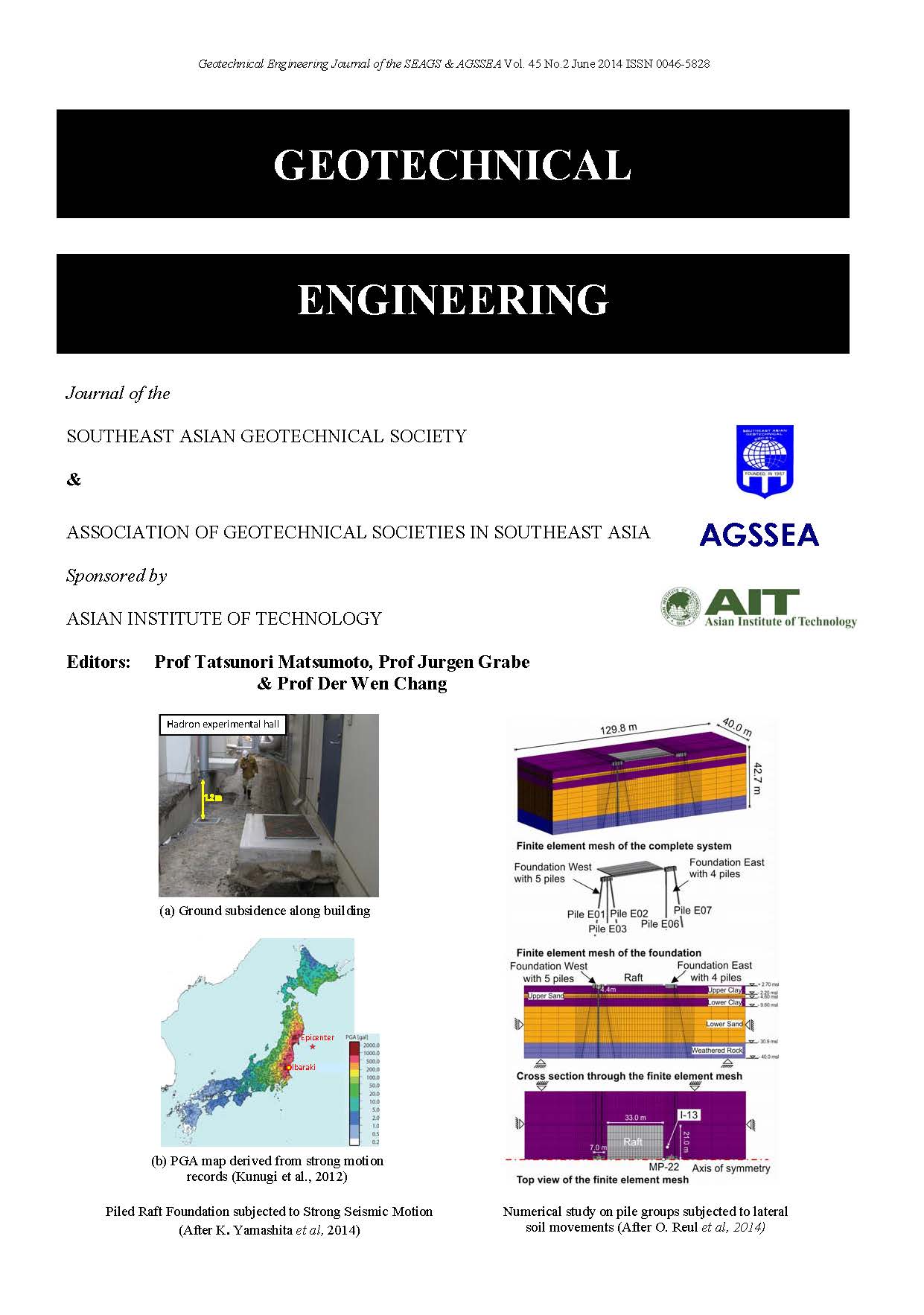Shaking Table Test on Superstructure-foundation-Ground System in Liquefiable Soil and Its Numerical Verification
Main Article Content
Abstract
In this paper, the effect of seismic enhancement on group-pile foundation with partial ground improvement method is investigated with shaking table tests and soil-water coupling dynamic elastoplastic finite element analyses. Model tests on a superstructuregroup pile foundation-ground system were conducted with the shaking table test device in which the liquefaction of sandy ground is considered. The model pile is made from aluminium and the model ground is made from Toyoura Sand. The model ground is carefully prepared with in-water sedimentary method. Different patterns of the partial ground improvement for an existed group-pile foundation are investigated in the tests and numerical analyses. In the analyses, nonlinear behavior of the ground and the piles are described by the cyclic mobility model (Zhang et al, 2007&2010) and the axial force dependent (AFD) model proposed by Zhang and Kimura (2002) that can take into consideration the axial-force dependency in the nonlinear moment-curvature relation. The applicability of the numerical analysis using the program named as DBLEAVES (Ye et al, 2007) has already been confirmed in previous researches that can be referred to relevant references. It is found that the effectiveness of the partial ground improvement method has been proved by both the shaking table tests and the numerical analyses.
Article Details

This work is licensed under a Creative Commons Attribution-NonCommercial-NoDerivatives 4.0 International License.
Copyright © 2019 Association of Geotechnical Societies in Southeast Asia (AGSSEA) - Southeast Asian Geotechnical Society (SEAGS).


